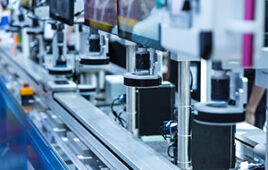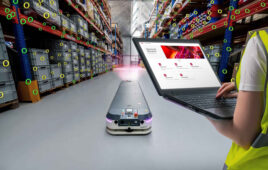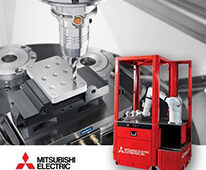Coal consumption is growing, despite the hype surrounding all the new alternative energy sources being developed. According to the Energy Information Administration, coal use was up in the first eight months of 2008. So, until we find the magic bullet, we have to deal with coal and all its hazards, including mercury emissions and the best way to dispose of the ash.

The grant from Opto22, called the OptoGreen grant included Opto22’s Snap Pac System hardware, which comes with 0 to10-V analog output modules to control the coal feed rate.
To address these issues, Professor Derek Dunn-Rankin and Associate Specialist Dr. John Garman at the University of California/Irvine (UCI) are trying to find methods to burn coal more efficiently with fewer emissions. They need to understand what is happening during the final stages of burning coal, biomass fuel, or both. Garman says, “Part of what we are doing is examining the process of char burnout and investigating what processes affect the small percentage of unburned carbon remaining after combustion.” Consequently, Dunn-Rankin’s team is varying residence time, temperature, oxygen concentration, and other variables to observe and understand how they interact.
Some funds come from General Electric and the University of California’s Industry-University Cooperative Research Program. This year, the project also got a grant from Opto 22, a California-based company that develops and manufactures hardware and software for industrial automation and control, remote monitoring, and data acquisition.
The team received hardware, software, a rack-mounted programmable automation controller, and analog input, analog output, and serial modules. The system controls the reactor’s coal feed rate (typically 0.5 to 10 grams/min.). An 8-channel thermocouple arrangement monitors and helps maintain the proper reactor temperature, while analog input modules keep the oxygen level at 3%.
They also uses computational fluid dynamics (CFD) software from Fluent, Inc. to simulate, solve, and analyze the flow and interaction of fluids and gases as they burn the coal and biomass. Specifically, CFD simulates the environment and physical variables of an entrained flow reactor (EFR), which produces the high temperature necessary to investigate coal and biomass combustion. Within 24 hours, propane and electric heat can raise the reactor temperature to more than 1200°C. Pulverized coal samples are then fed into the reactor. As the coal burns, lasers measure particle sizes and temperatures over the length of the EFR, and monitor and record the emissions. They also measure remaining residual carbon content on captured ash particles. Garman notes, “We burn very small amounts of pulverized coal (2 to 5 grams), which we feed into EFR.”
Experimental results from the reactor tests are compared to data from CFD simulations to validate predictive computer models. The models will be applied to full-scale coal burning utility burners used by GE and others to predict how small changes in design or operation of theses burners can reduce emissions and improve efficiency.
For more information:
www.opto22.com
www.fluent.us
Filed Under: Factory automation, Data acquisition + DAQ modules, Green engineering • renewable energy • sustainability, ENGINEERING SOFTWARE





Tell Us What You Think!